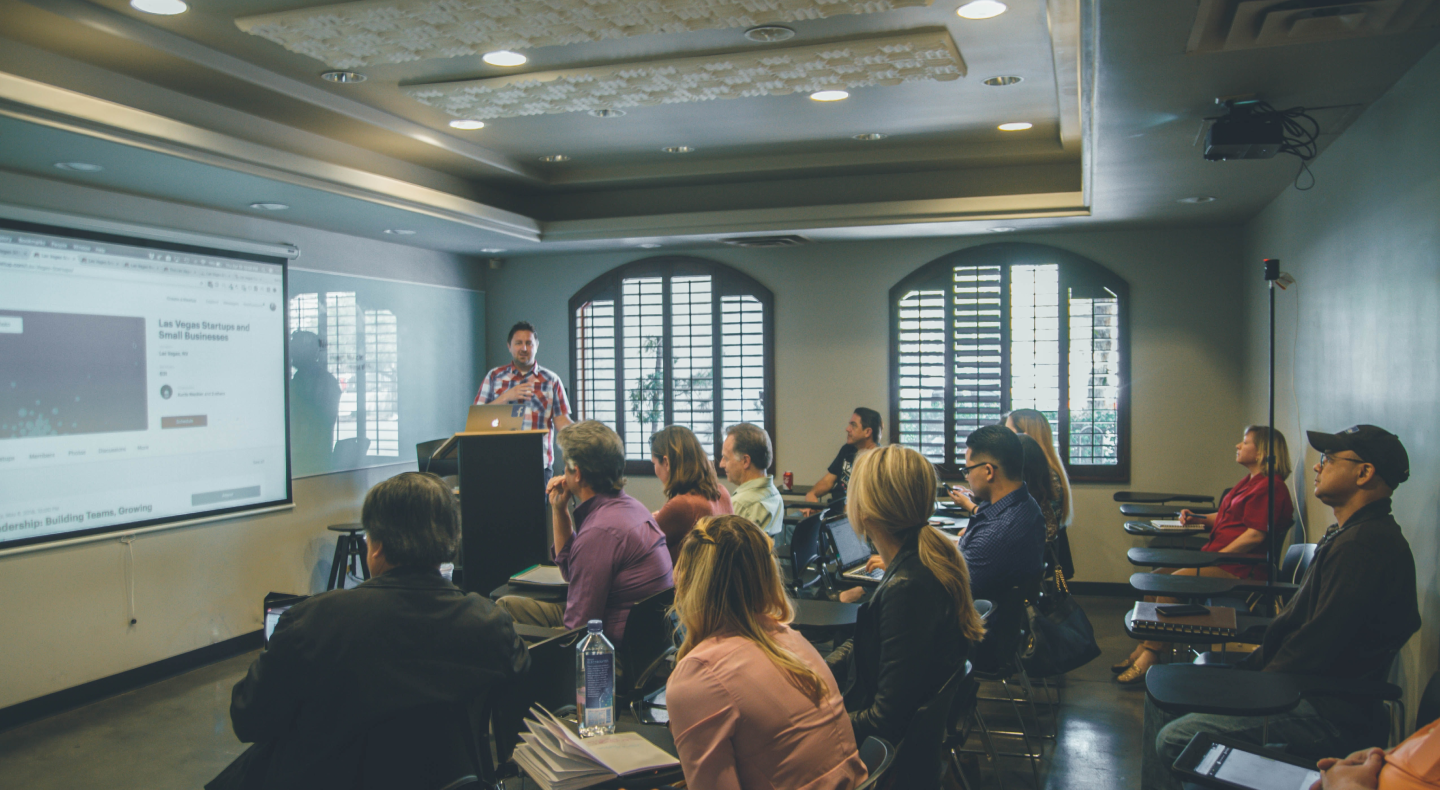Have You Built Your Sales Page Yet?
If you are focused on selling your online course one of the final things you have to do before launch is creating your sales page. Late last year I discovered a sales page that I liked and never had the time to circle back and break it down.
So today I’m going to show you Minimum Viable Video and their sales page.
Now, before I get started, I should let you know, there are twenty parts to this page. That’s a lot of parts. You can likely get away with a bit less, but it was done so well, I felt like you need to see the whole thing executed so brilliantly.
So let’s jump in…
Part One: Let’s Start with the Hero
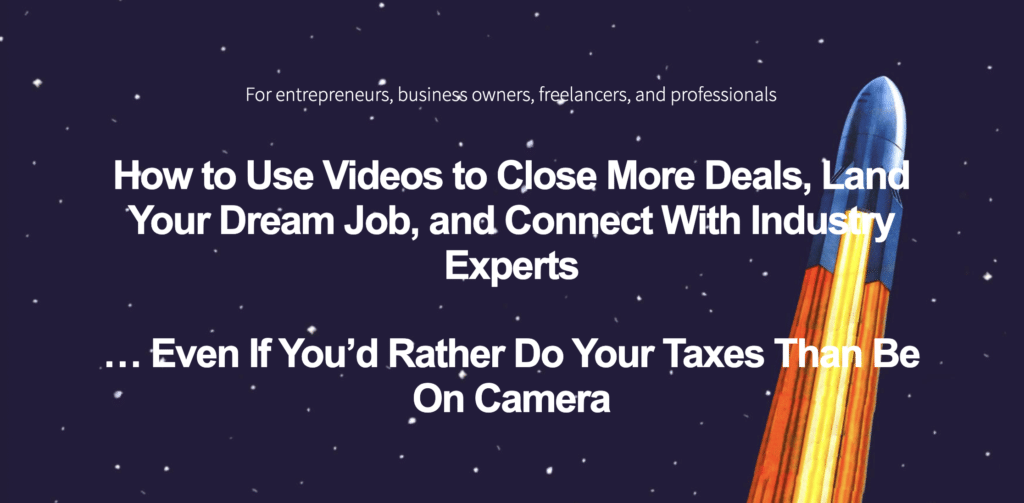
There are two things I really like about this hero area.
The first is that line above the headline, because it tells us who it is for. The worst thing you can do is let readers spend minutes going over your offering before figuring out it’s not for them.
The second is that they’re connecting what’s being taught with how you can put it to work. In other words, even from the very start, Cam is telling us why we should take this course.
Part Two: The Introduction
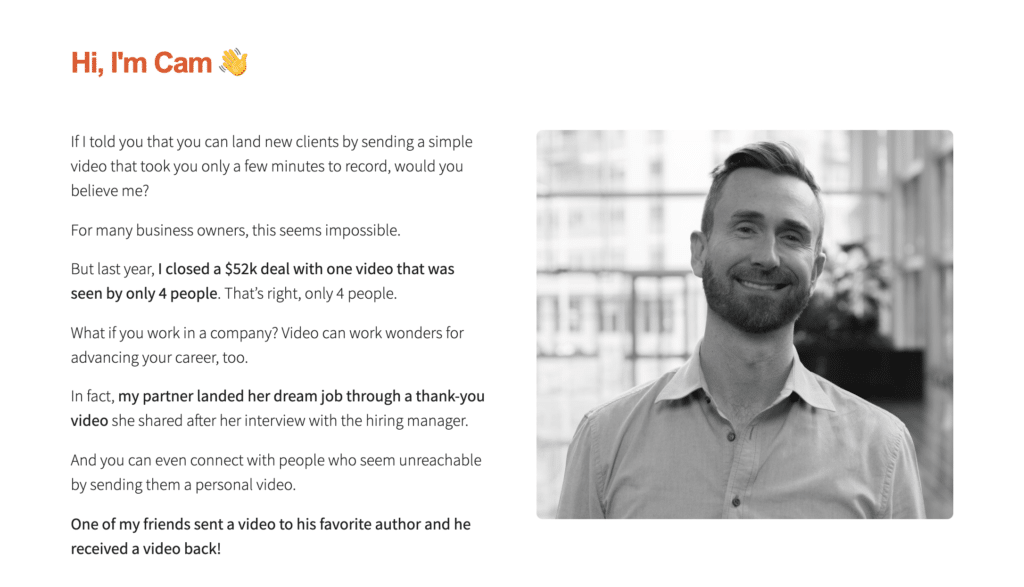
If you’re selling your online course with a sales page, one of the hardest parts you’ll likely have is the “talking about yourself” part. But this intro is done really well because it’s not the “about me” kind of section. Instead, this intro connects you to a real person, highlights that they know what they’re doing, and connects you (again) to the benefits / results that this course offers.
Part Three: Don’t Be Afraid of Words
One of my buddies, Justin, once shared an insight from all this work with Facebook Ads. He said that long ads were better (financially) than short ones. Not that short ones didn’t send more traffic. But that longer ones qualified the traffic better because the people who read the longer ones converted better (when it came time to make a purchase).
In this example, look at all the words that Cam is using to agitate the challenge. He’s not pushing deep into pain. But he’s stirring it up.
And he’s not afraid to use words, lots of them, to do it.
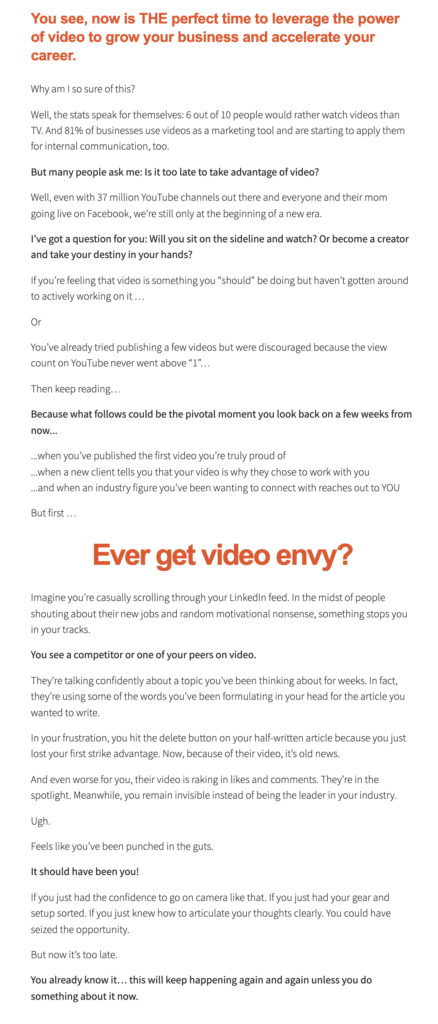
Part Four: Benefits as Imagine Statements
What I love about this next section is that they are all benefits but done as imagine statements. What could you do and accomplish, if you were comfortable doing XX? Let me list all the ways.
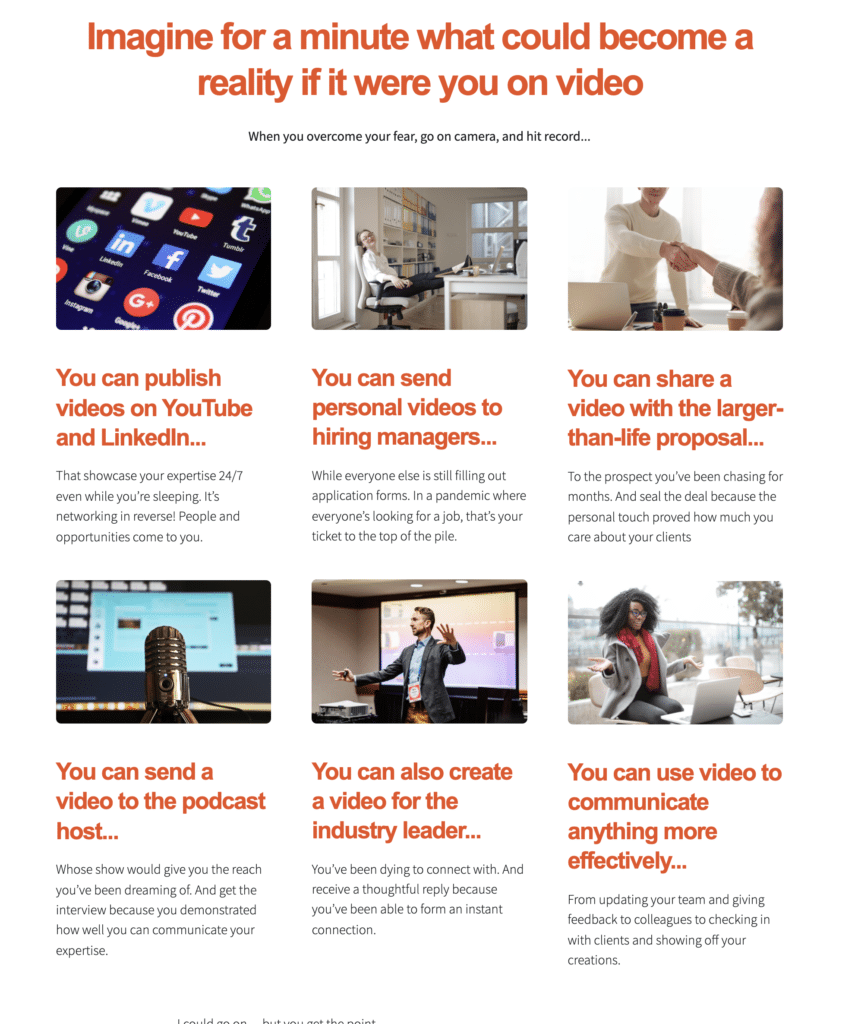
Part Five: Dealing with the Challenges
Now, in this next section, Cam isn’t dealing with the buying challenges. He’s not working past your initial conflict over whether to sign up. Instead, he’s directly attacking the challenges you have with the problem his course is solving.
In other words, he’s demonstrating his expertise by dealing with your stress in a relatable way that makes you want to sign up and get more of this from him.
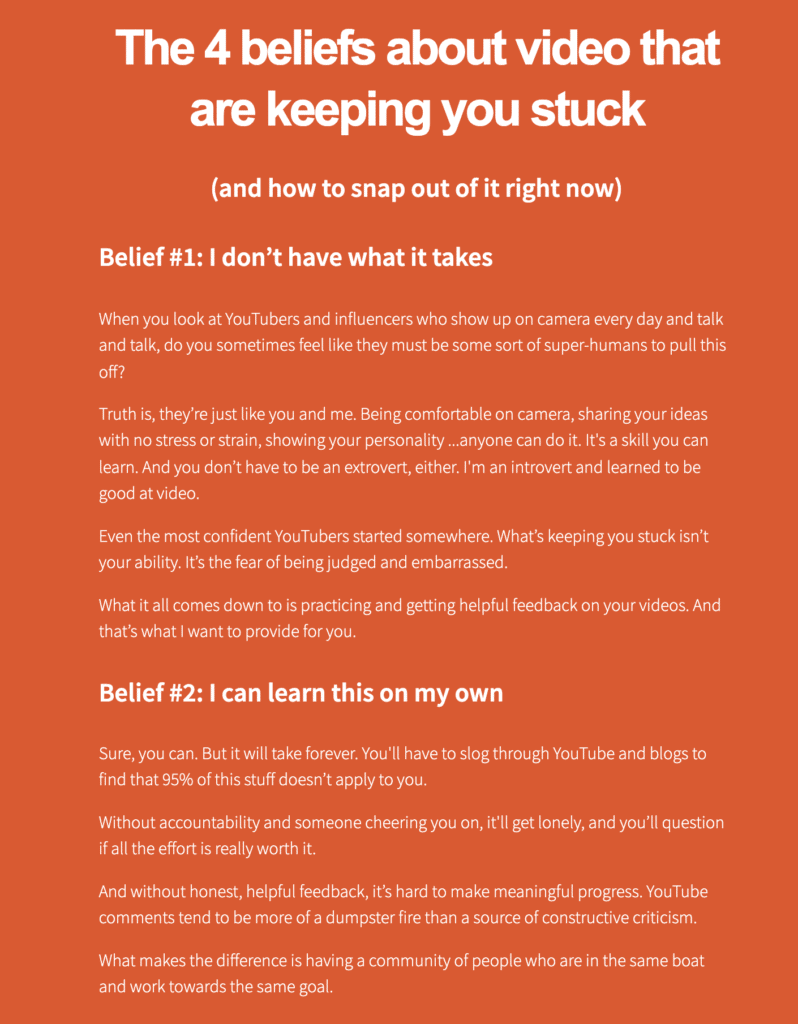
Part Six: What’s Included in the Course
When you’re selling your online course you’re eventually going to get to the point where you have to tell people what they’re going to get. I really like how Cam sets this up. Again, there’s a lot of insight into how he’s shaping his content – focusing on benefits even as he’s telling you what you’ll get.
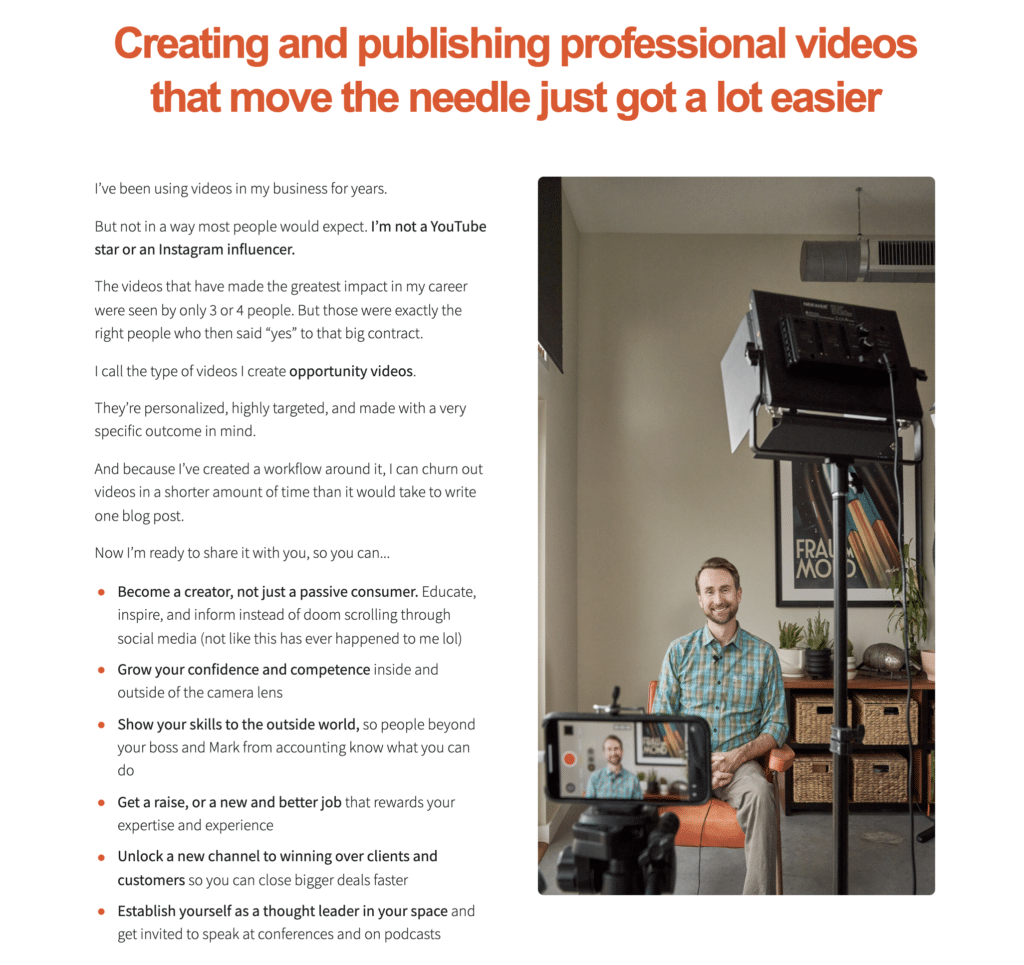
Part Seven: Testimonials
I’ve told you how important testimonials are. Well, you’ll see them here doing a superb job of convincing you to sign up for the course.

Part Eight: The Instructor
Now that you’re halfway into this page, it’s time to introduce you to the author and instructor of the course. But not just his name, but rather his history and qualifications to teach you what he’s going to teach.
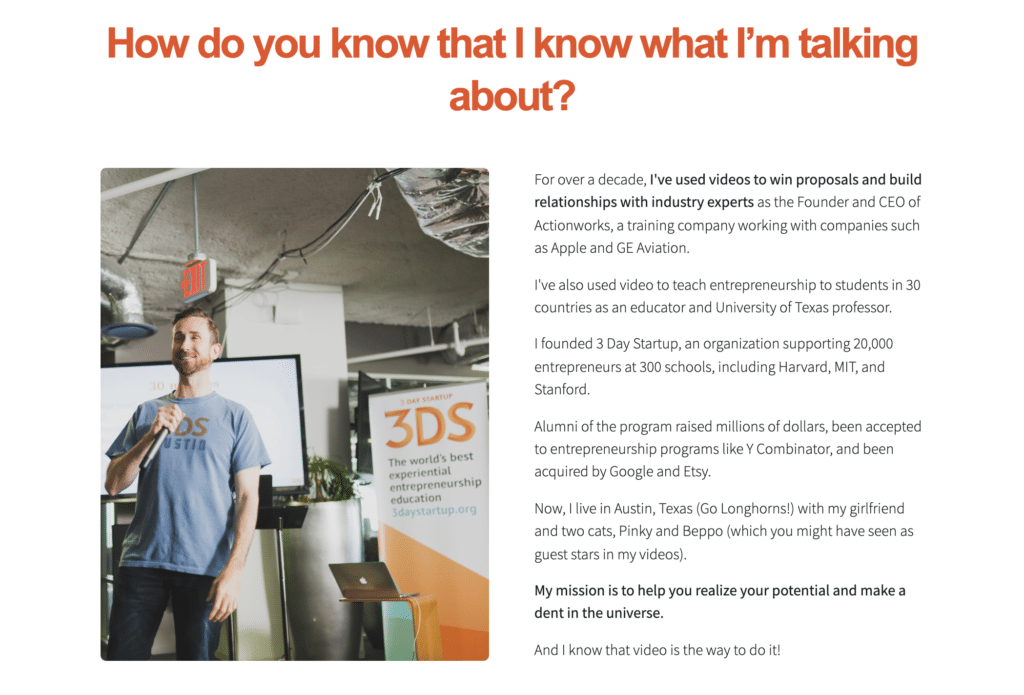
Part Nine: The Course
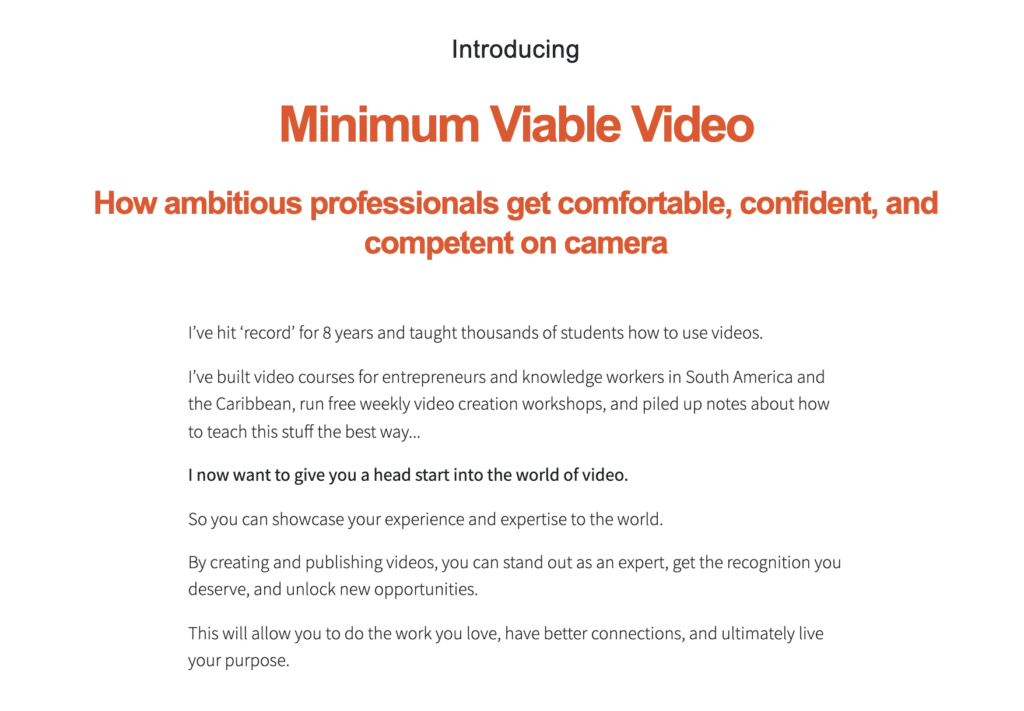
Notice that this is the first time you get the course name. And even then, you’re getting a description of the course without getting the low-level details of the course. Normally we jump too quickly into the details before we’ve really made sure our reader / prospect is interested. And when they’re not, they skim past it.
You’ve heard the “leave them wanting more,” well that’s how this is done.
Part Ten: More Testimonials
I don’t think you need another screenshot of this section. There will be more sections of testimonials. But I do like that the earlier section was text and three columns, and this one is text and two columns.
You’re likely thinking I would improve this to get video testimonials, but just you wait, he’ll get there.
Part Eleven: Course Details
Now we get to the actual course details. Notice that it starts with what the course isn’t and then moves into what it is. The focus is on effort, yours as a student, and not just a list of videos.
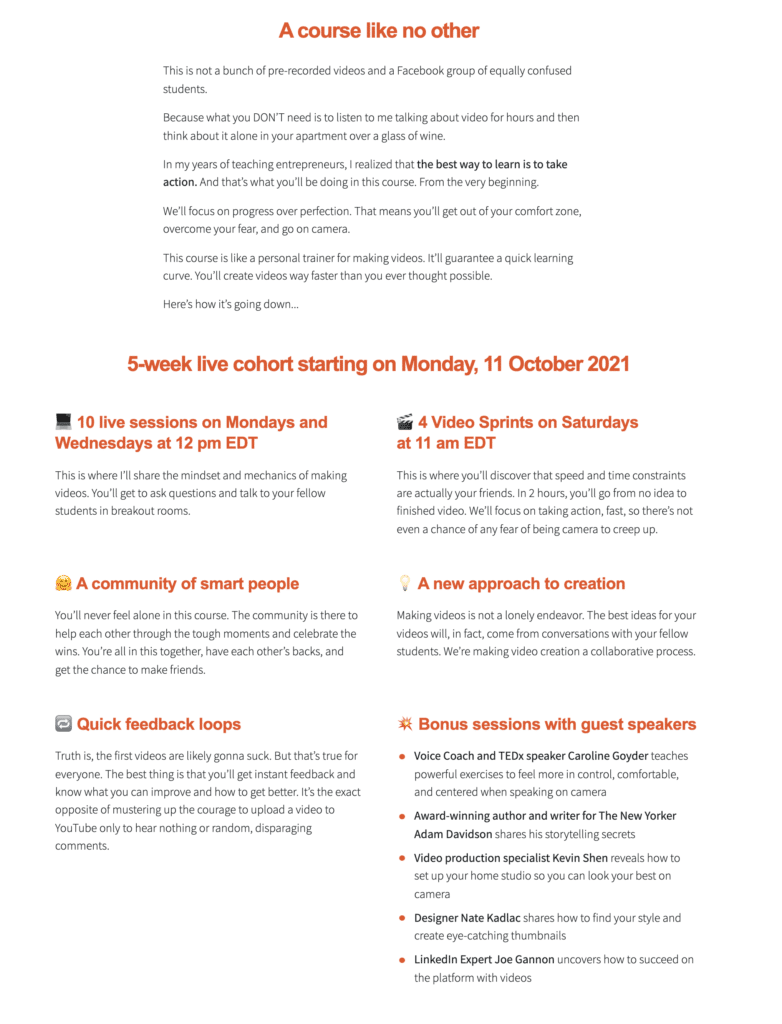
Part Twelve: Video Testimonial
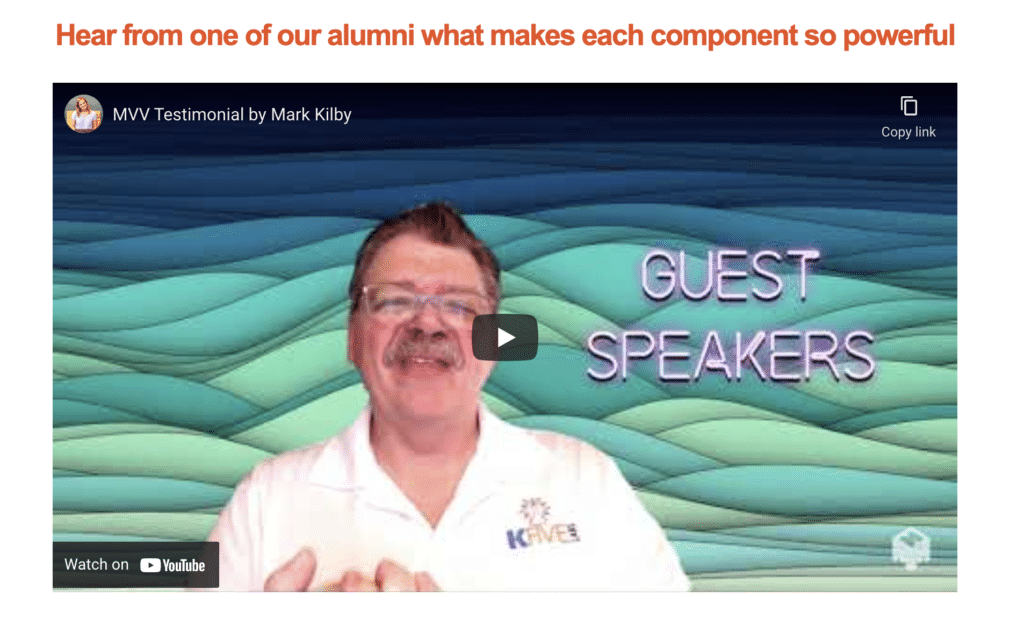
Now we see the introduction (but not the final use) of video testimonials. I think they’re the best way to close the deal – because they’re high fidelity.
What you’ll notice if you watch the videos is that they’ve been tweaked to add call outs so that the viewer knows what to pay attention to.
Part Thirteen: What You’ll Learn
My favorite line on this whole page is the data-driven articulation of what you’ll learn in this course. Here is it, “Students in our previous cohort published over 100 videos combined and improved their skills by 68%.“
That’s a powerful way to articulate what you’ll learn in this course. Because it’s a data point, it’s factual, and it’s a result (not just part of the process).
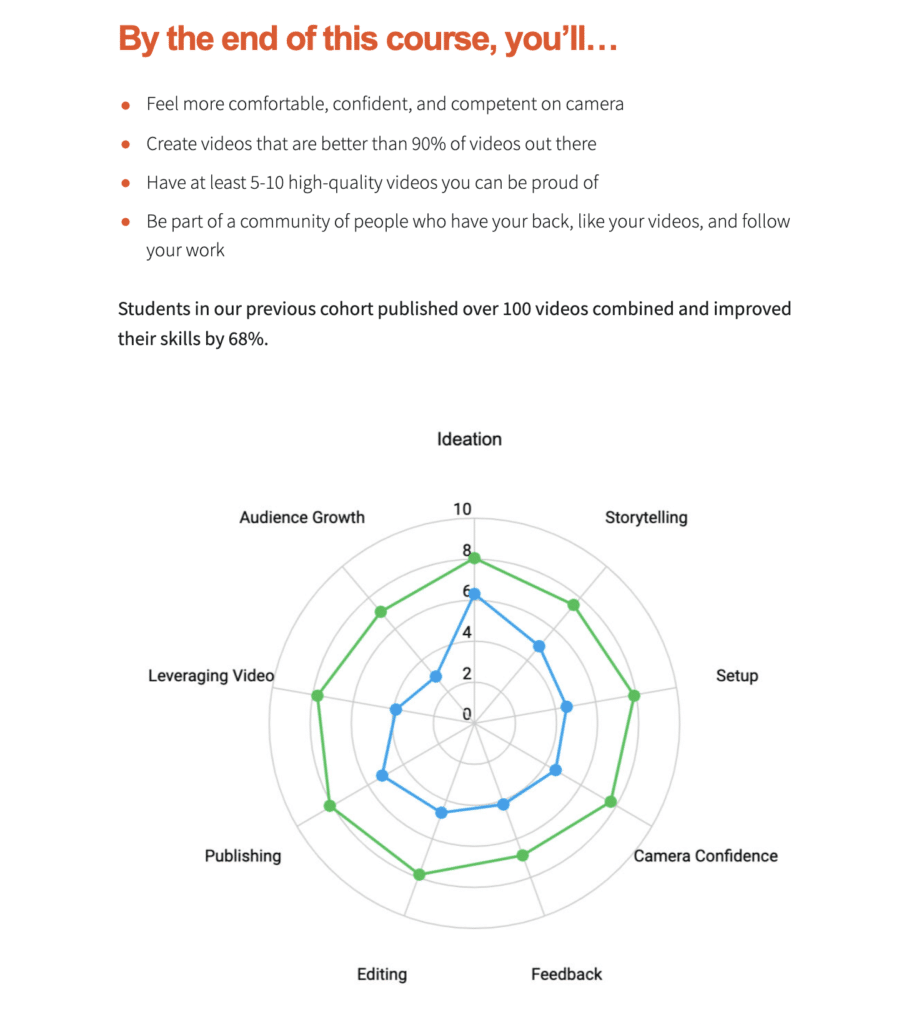
Part Fourteen: Corporate Testimonials
What I like about section fourteen is that it’s not just more testimonials. These are different. They’re corporate testimonials. And that’s powerful because you get to use those logos from companies you know and trust. It’s more powerful than just saying that you’ve helped individuals, small businesses and corporations.
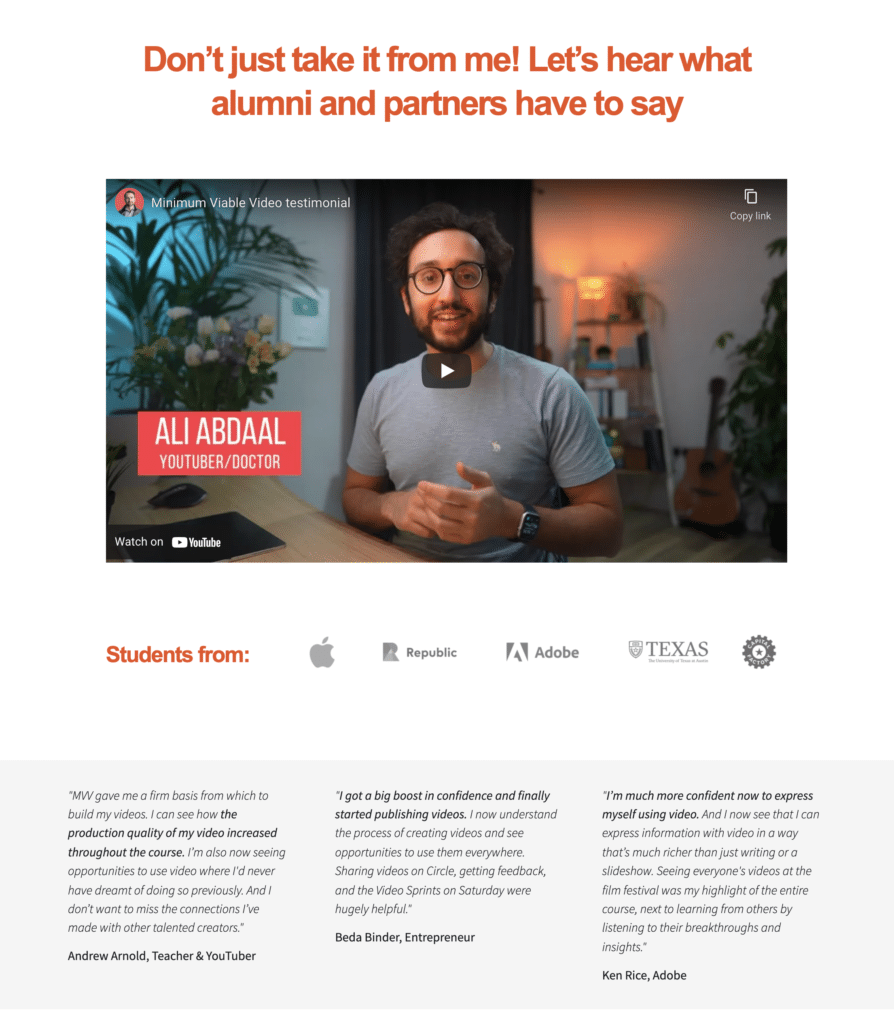
Part Fifteen: The Schedule
It took us getting to part fifteen to see the actual contents of the course. I told you in part nine that they were leaving us wanting more. Well now we’re here and we get to see the details of the course via their schedule.
Everyone selling their course online will do well to see how slowly they got here.
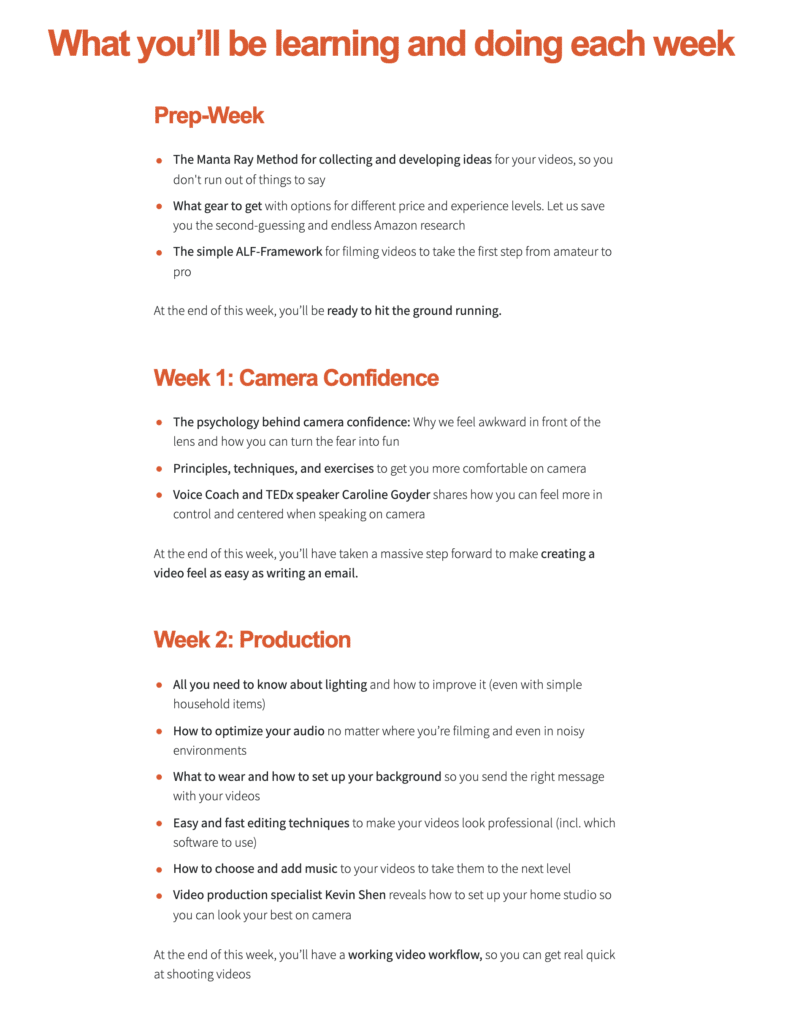
Part Sixteen: The Results
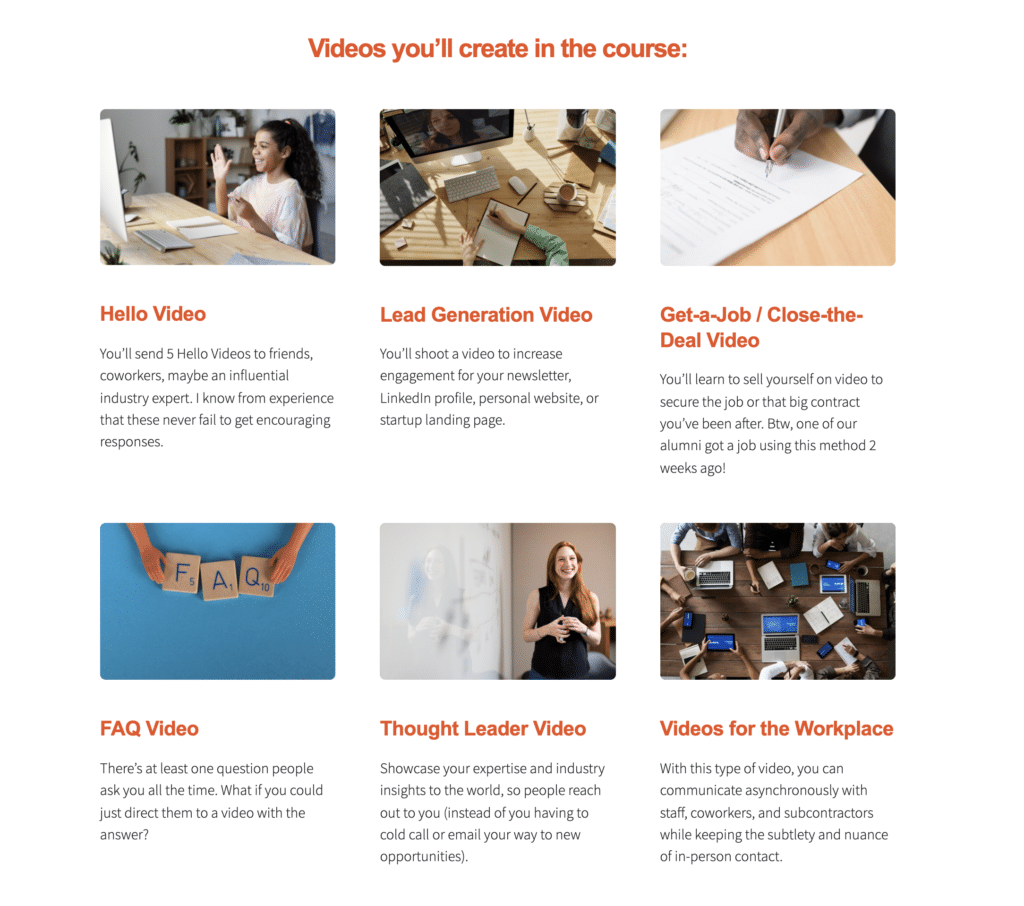
By now you realize that this course is a practical one with assignments. It’s a cohort-based learning course that when completed will leave you with several artifacts that you can use after graduation. So showing you what you leave with is a powerful way to get you to sign up.
Part Seventeen: Guarantee
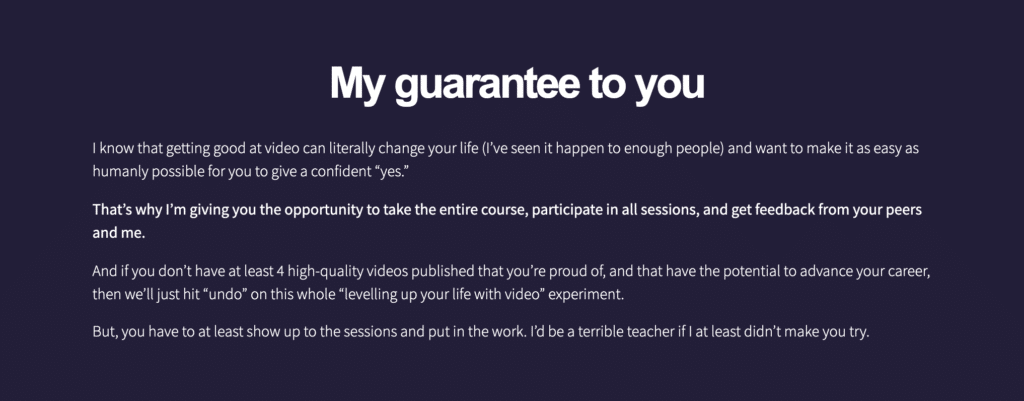
This is the kind of “money back guarantee” that I recommend to anyone I’m talking to about selling a course. It’s the “you have to show me you attended and put in the work, and if you’re still unsatisfied…” kind of approach.
I absolutely love it!
Part Eighteen: More Video Testimonials
Yes, even more testimonials. But you knew that was coming right?
Part Nineteen: How To Know You’re Ready
A section I don’t see enough on sales pages is this “how to know if you’re ready” kind of page. It’s an easy way to let prospects qualify and disqualify themselves without a lot of effort.
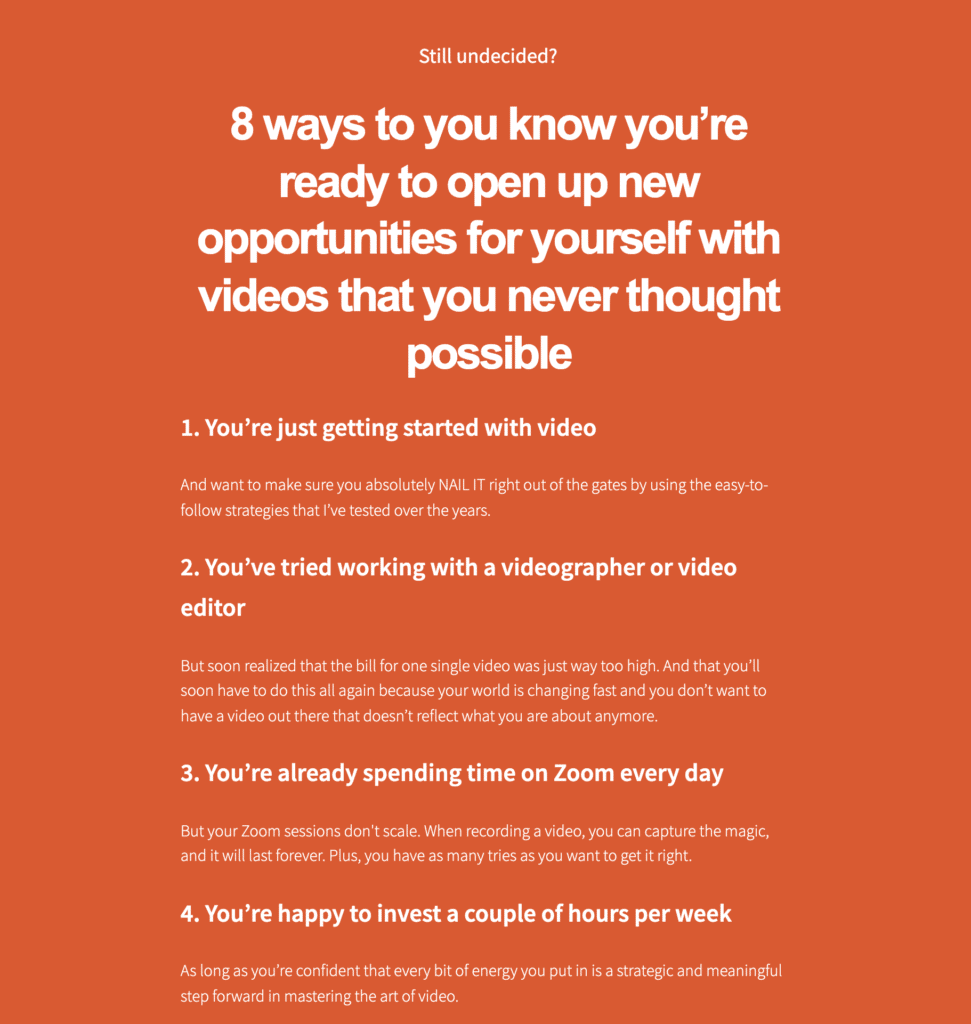
Part Twenty: FAQs
The final section before another “enroll” now section, which is available in several places on the page, is the FAQ section. The biggest benefit to how these FAQs are designed is that they’re shaped to mitigate the most common reasons people stop themselves from buying the course.
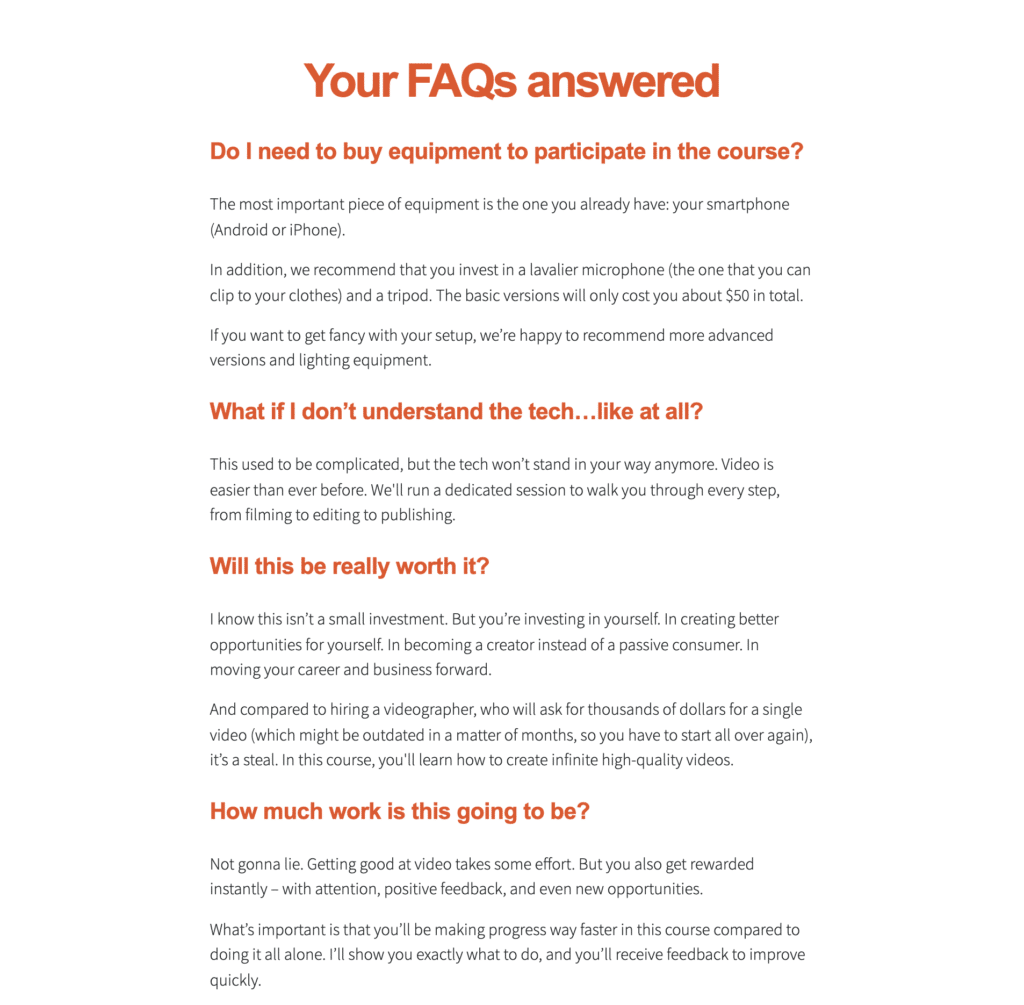
Selling Your Online Course? Always Look For Examples
If you’re getting ready to sell your online course, my recommendation is always the same – look for examples you like. Take screenshots, save them, and bookmark pages – all so you can come back and dig into them. Take what you like and use it as a model. Skip what doesn’t work for you.
But learn from everyone because doing this alone and from scratch is hard.
“This post was originally published on ChrisLema.com“

Chris Lema
@LearnDashLMS

